|
Strange Effects: The Mystifying History of Neutrino Experiments
March 9, 2012
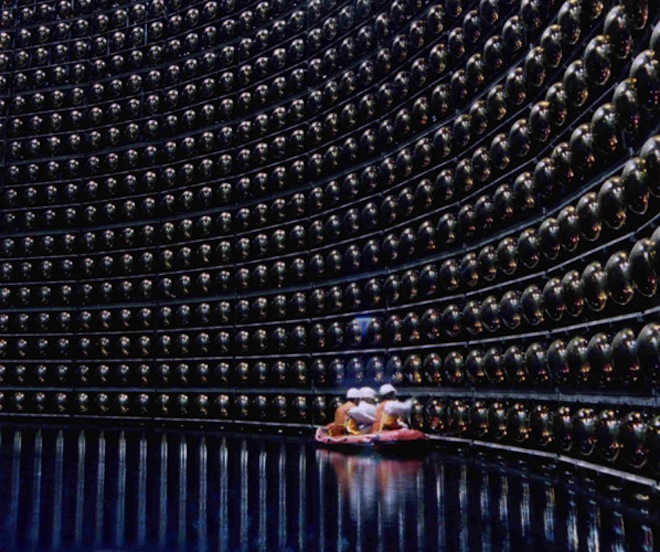
Late last year,
scientists with the OPERA collaboration in Gran Sasso, Italy
reported an incredible finding: neutrinos that appeared
to be moving faster than
the speed of light.
The news spread at a barely slower pace, fascinating the
public. One thing everyone knows is that a very famous
physicist named Albert Einstein once said that nothing
should travel faster than light speed.
In February, the OPERA researchers found a
couple small problems with
their experimental set-up, calling into question the
original faster-than-light neutrino result. The event
highlighted the difficulty of science at the edge of the
unknown -- and neutrinos are especially tricky.
More often than not, neutrino experiments throughout history
have turned up perplexing results. While most of these
experiments didn’t get the high-profile attention that
disputing Einstein provides, they've challenged scientists
and helped them learn ever more about the natural world.
In this gallery, we take a look at some of the strangest
historical neutrino results and the findings that still have
scientists scratching their heads.
Above:
What Is a Neutrino?
Neutrinos are tiny,
elusive and very common. For every proton or electron in the
universe there are at least a billion neutrinos.
Researchers need to know how neutrinos work because they're
relevant to many areas of physics. These ubiquitous specks
came into existence milliseconds after the Big Bang, and new
neutrinos are created during the radioactive decay of
elements, nuclear reactions within stars and the explosive
collapse of supernovas.
“They’re one of the dominant particles in the universe but
we still know very little about them,” said physicist Bill
Louis of Los
Alamos National Lab, co-spokesperson for the MiniBooNE
neutrino experiment.
Neutrinos are so hard to study because they barely interact
with other matter. Unlike the more familiar electron, they
have no electromagnetic charge. They pass as easily through
lead walls as through mist, and are so light that scientists
long thought they had no mass at all. Detecting them
requires closely watching a large tank of material, such a
water, on the off chance that a neutrino will hit another
particle and produce an observable change.
Image: Researchers sit
in a boat inside the Super-Kamiokande
neutrino experiment in
Japan. The detector is made from a tank filled with 50,000
tons of water and lined with more than 11,000
photomultiplier tubes. (Kamioka Observatory/ICRR/University
of Tokyo)
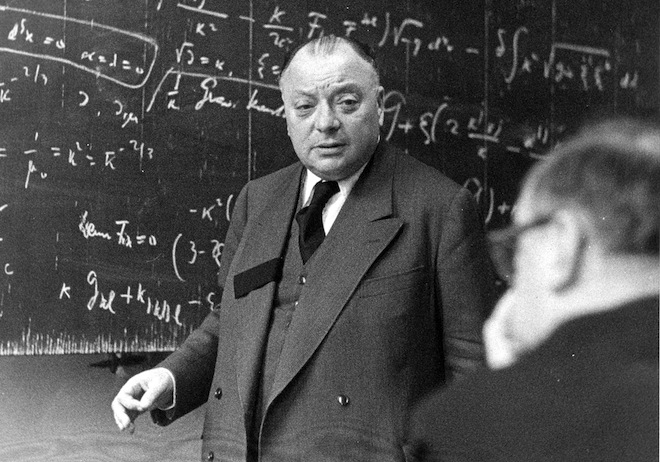
Beta Decay Puzzle
“Neutrinos have always
had a curious history,” said theoretical physicist Andre
de Gouvęa of
Northwestern University in Illinois.
The tiny particles first came to scientists’ attention in beta
decay, a radioactive process discovered at the end of
the 19th century in which an atom's nucleus emits an
electron and transforms itself into a different atom.
In the 1910s, researchers noticed something strange about
beta decay. If the only particle emitted was an electron,
then the process seemed to violate two physical laws:
conservation of energy and conservation of momentum. No one
at the time understood how this could happen, but evidence
for the violations grew stronger and stronger with each new
experiment.
In 1930, physicist Wolfgang Pauli wondered if the nuclear
process was more complex than previously thought. If an atom
also emitted something else during beta decay, the apparent
contradictions to physical law could be solved. That
something else turned out to be the neutrino.
But in order for neutrinos to exist, they would have to be
very light and not very interactive. No one had ever seen
particles that could fit this description, and no one could
think of a way to find them. For a long time, scientists
thought neutrinos would prove impossible to detect.
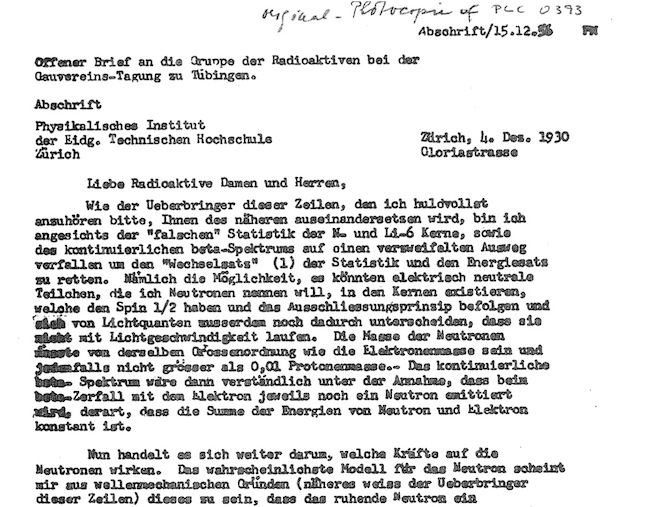
Images: 1) Wolfgang
Pauli in 1955. (W Dieckvoss/CERN) 2) The opening page of a
letter outlining Pauli’s idea of the neutrino, addressed via
Lise Meitner to the ‘Dear Radioactive Ladies and Gentlemen’
attending a conference in Tubingen, Germany in 1930. (CERN)
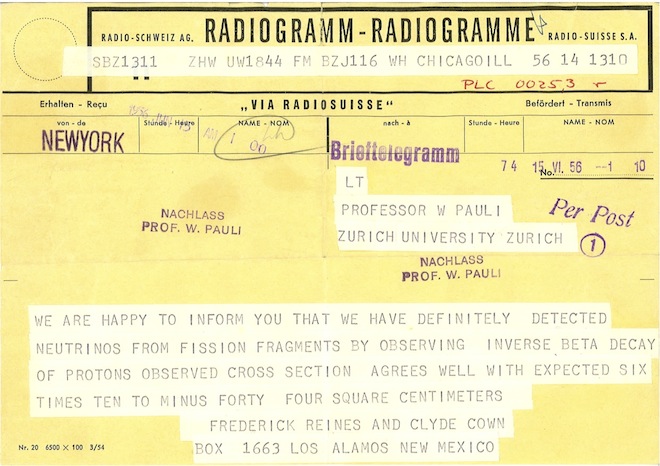
Neutrinos Discovered
In 1956, physicists
studying neutrinos had some fancy new tools at their
disposal. In the 25 years since the particles were first
postulated, the U.S. had built several nuclear reactors for
its atomic weapons program.
Many researchers realized that these reactors, which emitted
300 trillion neutrinos per square inch every second, could
be harnessed to detect neutrinos. Though they hardly ever
interact with matter, there's a tiny probability that, given
enough material, a neutrino will collide with something. In
a process that's basically the reverse of beta decay, this
direct hit will generate gamma radiation.
That year, physicists Clyde Cowan and Frederick Reines built
a detector and placed it near theSavannah
River Plant in
South Carolina. With the reactor on, their experiment
unambiguously detected neutrinos for the first time.
Though Cowan died in 1974, Reines would go on to win the 1995
Nobel Prize in Physics for
the discovery.
Image: Telegram from
Clyde Cowan and Frederick Reines to Wolfgang Pauli,
announcing the discovery of the neutrino. (CERN)
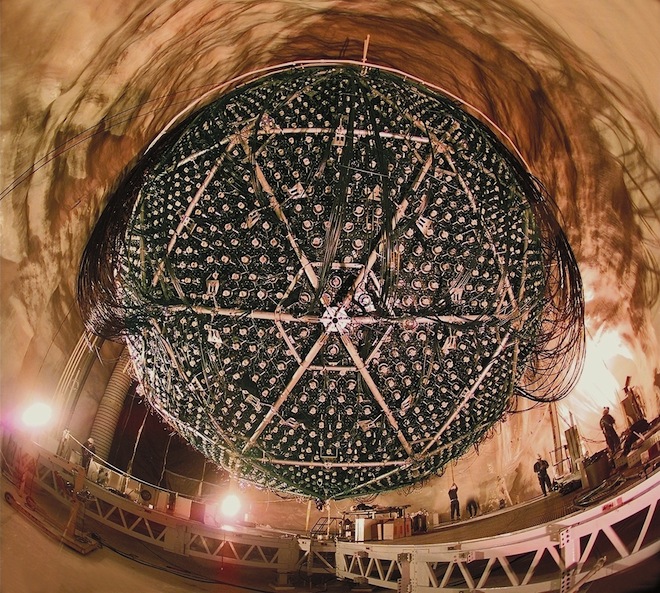
The Solar Puzzle
Look at the nail on
your pinky finger: Every second, about 65 billion neutrinos
pass through it. Almost all were produced inside the giant
nuclear reactor in our sun's belly.
Astronomers want to detect those neutrinos because they
contain important information about processes going on in
the sun’s center. In 1964, physicist Ray Davis and
astronomer John Bacall built an experiment in the Homestake
mine in South Dakota to
find these neutrinos. The detector needed to be placed deep
underground because cosmic rays hitting the Earth’s
atmosphere would interfere with the results.
After the Homestake experiment was calibrated and run, the
researchers noticed an anomaly. According to their
calculations, the sun should have been producing three times
as many neutrinos as they actually detected. So they went
back to the drawing board, looking for mistakes and making
more refined estimates. But they still couldn’t figure out
where they went wrong.
The Homestake experiment ran for more than 30 years, always
showing the same result: three times fewer neutrinos than
expected. Astronomers feared that their models of the sun
might be totally incorrect. The problem persisted into the
mid-'90s.
By this point, researchers had discovered that neutrinos
come in three different types. The neutrino produced during
beta decay or in the sun's center is an electron neutrino,
but other processes will create particles known as muon or
tau neutrinos.
You might guess why the three-type finding was important to
a puzzle in which researchers found one-third the number of
neutrinos they expected. Researchers realized that during
their flight between the sun and Earth, electron neutrinos
-- the type detected at Homestake -- were transforming into
the other types. As a result, the experiment missed
two-thirds of the neutrinos. When new detectors were built
that could catch all three types of neutrinos, the
discrepancy vanished.
The finding had profound implications. While some scientists
had previously considered the neutrino to be massless,
oscillating between different types required the particles
to have mass.
Image: In 2001, the Sudbury
Neutrino Observatory in
Canada detected all three types of neutrinos coming from the
sun, helping solve the solar neutrino problem. (Roy
Kaltschmidt/Lawrence Berkeley National Lab)
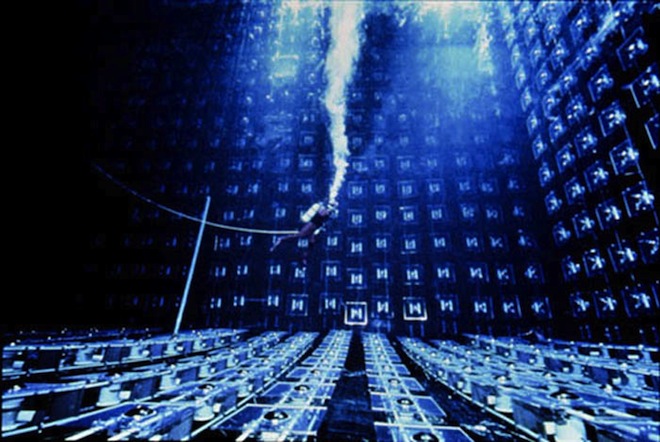
The Atmospheric Puzzle
In the 1980s,
scientists were occupied with a problem not related to
neutrinos in any way. Some theoreticians suggested that the
proton – a stable particle by all accounts – might decay
into other, lighter subatomic particles. If this occurred,
it would be part of physicists’ long-sought dream: a grand
unified theory that merged the electromagnetic, weak and
strong forces.
But if protons regularly decayed, it would be a problem to
life on Earth. The atoms in our bodies could start
chaotically changing into other elements. No one wants
carbon in their DNA spontaneously turning into boron.
So theorists said that protons might decay, but over
timescales 20 orders of magnitude longer than the age of the
universe. To test this, scientists watched huge numbers of
protons – all those contained in, for example, a giant tank
of water.
Watching for the decay of one proton out of 1032,
or 100 nonillion protons, is the ultimate
needle-in-a-haystack challenge. These experiments had to be
placed deep underground to prevent cosmic rays from entering
and fooling scientists into thinking a proton had decayed.
But cosmic rays hitting the atmosphere also create
neutrinos, and even moving deep underground doesn’t shield
you from them. Since a neutrino passing through the detector
would look like a decaying proton, researchers needed to
know how many neutrinos they might expect to see.
When they measured the number, scientists found something
very weird. Neutrinos coming from above the experiment
outnumbered those arriving from below by two to one.
After about 10 years of puzzlement, scientists finally
figured it out: During flight, neutrinos traveling from
below (through the 8000-mile-wide Earth) had time to
transform into a different neutrino type. The experiments
were only sensitive to one type of neutrino, so they missed
the half that changed.
The finding confirmed that neutrinos changed as a function
of the distance they traveled.
“When people figured this out, they got very excited, ” said
theoretical physicist Andre de Gouvęa. “It showed us that
neutrinos had properties that we didn’t know existed at
all.”
To this day, no one has seen proton decay.
Image: A scuba diver
swims through the Irvine-Michigan-Brookhaven
detector in
Ohio. This experiment was built in the early 1980s to see if
protons decay but instead helped figure out that atmospheric
neutrinos oscillate. (Department of Energy)
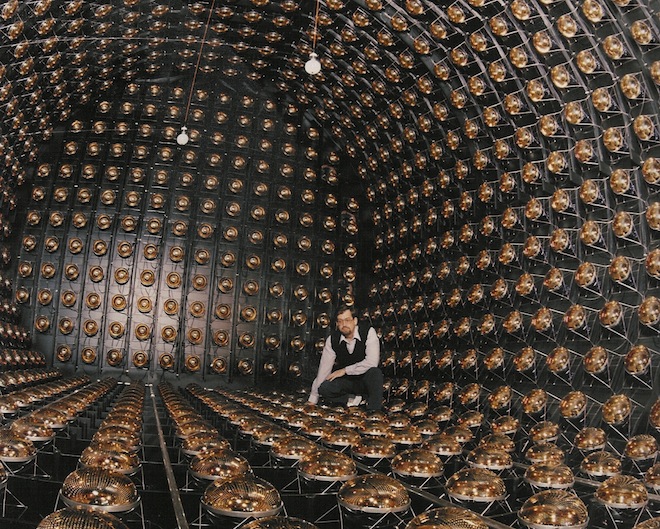
A New Neutrino?
In 1993, scientists
constructed the Liquid
Scintillator Neutrino Detector (LSND)
experiment at Los Alamos National Lab. Their aim was to
figure out if neutrinos can oscillate from one type to
another. (Results from the Homestake and proton decay
experiments weren't yet conclusive.)
LSND remains famous among scientists because it saw a small
excess of electron antineutrinos appear seemingly from
nowhere. The best explanation for this odd anomaly required
completely new physics.
All known subatomic particles come in groups of three. The
electron, for instance, is associated with particles called
the muon and the tau, which act much like electrons but are
heavier. But what the LSND experiment saw could best be
explained if, instead of three neutrino types, there were
four or more.
“The implications of this are potentially huge,” said
physicist Bill Louis.
The existence of a fourth neutrino would throw serious doubt
on the current models of particle physics. But it might also
help explain certain unresolved problems, such as the
details of supernova explosions.
In order to have remained hidden for this long, a fourth
neutrino would have very special properties. There are four
fundamental forces: the strong, electromagnetic, weak, and
gravitational forces. A proton interacts with all of them,
an electron with all but the strong, and neutrinos only
interact with the weak and gravity. But this new fourth
neutrino would only interact with gravity.
Because this type of neutrino is so unexpected, many
researchers remain skeptical of the LSND findings. As well,
several other experiments that could have observed the LSND
phenomenon didn’t see it.
“That doesn’t prove it wrong, but it does restrict the
parameters,” said theoretical physicist Andre de Gouvęa.
The LSND findings remain one of the great unsolved mysteries
in neutrino physics.
Image: A physicist
sits inside the LSND detector. (Los Alamos National
Laboratory)
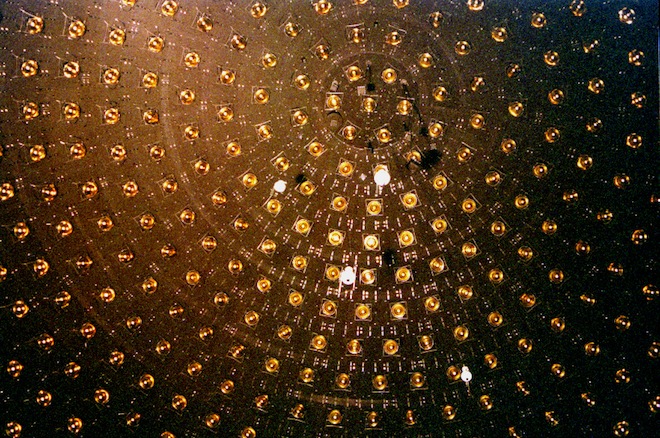
More Strangeness
In the modern day,
many strange experimental results regarding neutrinos
persist.
Beginning in 2002, scientists began running a new experiment
named MiniBooNE at Fermi
National Accelerator Laboratory in
Illinois. MiniBooNE’s aim was to confirm or deny the
controversial LSND results. Their initial results seemed to
disprove the LSND anomaly, but further data changed that
picture.
“Now it looks like MiniBooNE is consistent with LSND,” said
physicist Bill Louis, co-spokesperson for the experiment.
If this is true, theorists may need to come up with new
physical models for how neutrinos behave. These results
could potentially impact many fields outside of the neutrino
physics community, including cosmology and astrophysics.
“On top of everything, MiniBooNE might have run into another
anomaly,” said theoretical physicist Andre de Gouvęa.
During its preliminary run, MiniBooNE spotted a strange
excess of low-energy neutrinos. While many scientists
thought these results could be simply be background noise,
later data confirmed the surplus. As of today, physicists
trying to explain the odd finding remain stumped.
Working in a completely different vein, researchers ran into one
more abnormal result in
Jan. 2011. New, more careful calculations on the number of
neutrinos expected to come out of nuclear reactors showed
that estimates from the last 20 years might be wrong.
“Combined with the LSND and MiniBooNE results, this reactor
anomaly seems to indicate something weird is going on,” said
de Gouvęa. To address this problem, researchers will need to
build new detectors and rerun experiments that until now
seemed to be closed cases.
Taken together, LSND, MiniBooNE, and the reactor anomalies
suggest that neutrino scientists still have many puzzles
left to figure out.
Image: The walls of
the MiniBooNE detector. (Fermi National Accelerator
Laboratory)
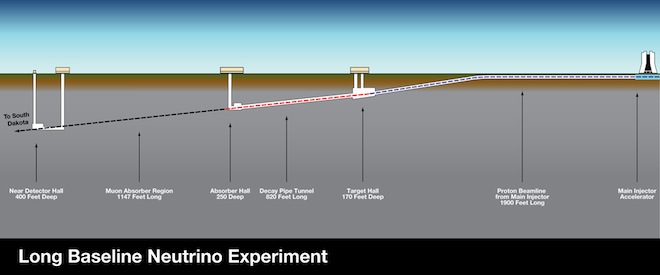
Future Experiments
Even without
faster-than-light neutrinos, scientists still have much to
sort out. But in order to make the next generation of
discoveries, researchers are going to need a large number of
neutrinos.
For this, physicists in the U.S. are hoping to get approval
for the Long-Baseline
Neutrino Experiment(LBNE). This dual-facility test would
shoot the
world’s most intense neutrino beam from
Fermilab in Illinois 800 miles through solid earth to the
Homestake mine in South Dakota, the same location where
solar neutrinos were first detected.
At the proposed Deep
Underground Science and Engineering Laboratory,
researchers would catch the neutrinos, watching for their
oscillations and any other interesting phenomena. Though
this experiment might not be built for more than 15 years,
the LBNE collaboration already has 400 eager scientists
signed on.
In one future experiment, scientists hope to use LBNE to
answer a profound question: why is the universe made of
matter rather than antimatter? Though you, being made of
matter, likely don’t give the idea much thought, it's a
perplexing issue in modern physics.
Most physics equations predict that the universe would have
been created with equal parts matter and antimatter, which
are identical in every respect but their charge. The problem
is that putting the two together causes them to annihilate
into pure energy. So if the number of particles and
antiparticles was originally equal after the Big Bang, every
bit of matter in the cosmos would eventually find a partner
and disappear in a puff of radiation.
Yet matter persists. Scientists have already found a small
difference, called charge-parity (CP) violation, which
affects some types of matter and antimatter and helps
explain why matter dominates. But the finding still isn't
enough to account for the amount of matter in the universe.
Ideally, researchers
would like to search for CP violation in neutrinos. If even
a slightly higher number of neutrinos form than
antineutrinos, then the universe makes sense. Otherwise,
it’s back to the drawing board once again.
Source: Wired
Science
1 2 3 4 5 6 7 8 9 10 Newest
articles
|









